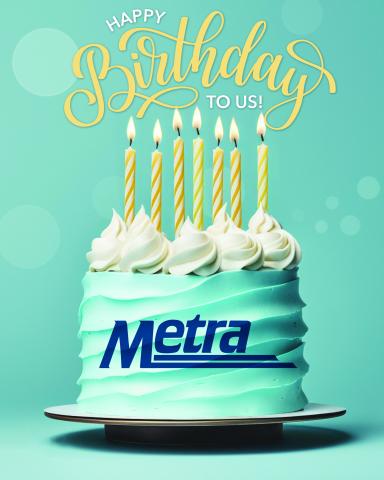On June 8, 1984, the Board of the organization now known as Metra met for the first time. There was much work to do.
For most of Chicago’s history, commuter rail was operated by various private railroads. But they had been losing money for decades due to fewer riders (lost to the car and the subsidized CTA) and higher costs (accelerated by inflation in the early 70s). There was not enough money to operate the trains and invest in the system, and the railroads were threatening to discontinue commuter service.
To keep the railroads running, voters in the six-county region in 1974 approved the creation of the Regional Transportation Authority. Initially, the RTA just provided subsidies to the private railroads (and assistance to the struggling CTA and suburban bus companies). But when the Rock Island and Milwaukee Road railroads went bankrupt, the RTA in 1981 formed the Northeast Illinois Railroad Corporation (NIRC) to start running the trains directly.
For a variety of reasons, including city-suburban squabbles, “Council Wars,” and a cash crunch that doubled commuter fares, Springfield reorganized and decentralized the RTA in 1983. It created a special Commuter Rail Division to coordinate and oversee all commuter rail operations in the six-county area, and a Suburban Bus Division (Pace) to address suburban bus issues. The new rail division, starting work in 1984, would continue to provide subsidies to the private railroads that were still solvent and through the NIRC operate the Rock Island and Milwaukee lines.
But it also had to make up for decades of underinvestment, end a rollercoaster ride of fares going up and down, standardize service and fares from line to line, stabilize or acquire the struggling private rail lines and check off a laundry list of other chores.
Due to the patchwork nature of commuter rail at the time, the division in 1985 came up with “Metra” (short for “Metropolitan Rail”) as a service mark. The idea was to bring a unifying identity to all the various components. That system still is in place, although the ownership and/or operators of several lines have changed.
Metra acquired the Metra Electric from Illinois Central Gulf in 1987, a transaction that included the NIRC taking over operations of (but not ownership of) the Heritage Corridor Line. It also took over the SouthWest Service (from Norfolk Southern) in 1993, and in 1996, started a whole new line – the North Central Service – the first new commuter line in Chicago in about 70 years.
Metra still subsidizes operations on four lines – the three Union Pacific (UP) lines and the BNSF Line, which are owned and operated by those freight railroads. (Metra and UP are currently negotiating Metra taking over operations on, but not ownership of, those three lines.)
While capital funding has never been sufficient, Metra over the years managed to make major improvements to rolling stock and infrastructure, including downtown stations, a noticeable change from the threadbare system it inherited. And recent state and federal capital infusions have allowed Metra to undertake the biggest capital program in its history, though we still can’t afford to do everything that’s needed.
Operating funding swung from stability to crisis over the years, until COVID-19 completely upended the funding model. Thanks to the pandemic, Metra, CTA and Pace are now threatened with funding shortfalls that echo those faced 40 years ago.
